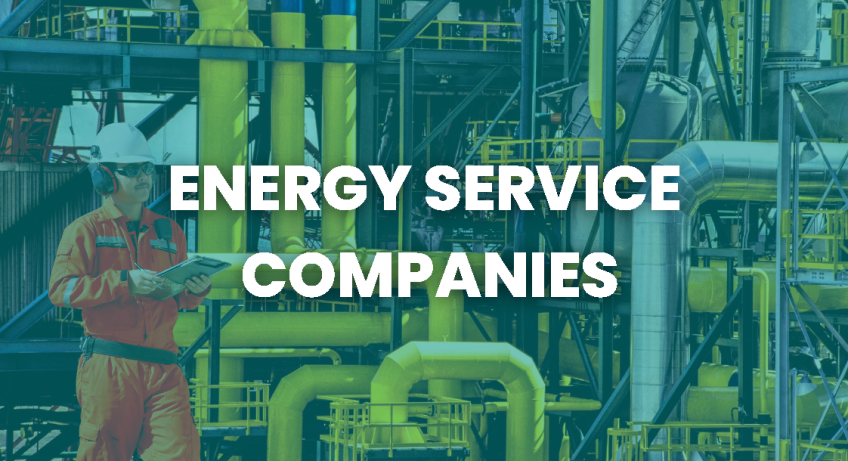Amongst the fastest expanding sectors around the oil and gas sector is energy service providers. It provides a diverse of energy solutions and this includes energy administration, measuring and assessment, conservation, infrastructure and eco-sustainability and repair. The typical target of any energy service company (ESCO) is to provide substantial cost savings in energy costs by providing energy audits and reviews and effectively making processes more efficient with regards to energy rates.
Since their inception in the 80s, energy service organizations have evolved and expanded. Since COVID enveloped the world we’ve seen probably the most radical adjustments to this sector while trying to remain relevant. Technology plays a significant role in the energy vertical and as such ESCOs have adapted to service this now technologically advanced sector.

Primarily energy service firms focus on reducing energy consumption and saving providers on energy costs by a variety of methods including regulating energy usage and discounted rate negotiations in the case of energy management advisory firms. In the 90s with deregulation we saw the rise of ESCOs then things slowed during the Obama administration we saw reversals of regulations only to again be deregulated by the current President Donald Trump. Energy service providers excel in a deregulated market condition like the one we have now with the Trump Administration.
In 2006 the industry group NAESCO reported energy service providers (ESCOs) grew by 22% and boasted $2.6 billion in revenues marking a paramount moment for ESCOs throughout the United States. In Canada the popularity of ESCOs also grew exponentially primarily in the oil rich province of Alberta.
There are a number of variations of the types of service providers offered by ESCOs. Some include renewable energy, commissioning and start-up, environmental site assessments, fuel flare vent and more. A few other services include water treatment, transportation, pipeline monitoring, leak detection, midstream and downstream solutions, energy cost savings and management and environmental compliance programs such as AMEP.
The Alberta Methane Emissions Program (AMEP) is the government financed program which offers a total share of some $17.6 million geared toward reducing methane emissions in the Alberta oil and gas sector. In an attempt to satisfy climate targets of the Canadian government by the year 2030, the Alberta government opened the AMEP initiative.
The objective of the program is to encourage decreases in methane discharge in the oil and gas industry within Alberta, whilst providing support to government regulation changes, decreasing expenditures to industry, and providing best practices related to methane detection and management. Financing for the Alberta Methane Emissions Reduction Program (AMEP) is offered by the Technology Innovation and Emissions Reduction (TIER) Fund of Alberta. The AMEP program is managed by the Delivery Agent Partnership (DAP), which has been founded by the Carbon Management Canada (CMC) and the Sundre Petroleum Operators Group (SPOG). AMEP will function as a worldwide showcase for environmental and economic benefits which might be brought on by innovation in the private sector, research and development in academic institutions, and proactive policy and regulation. This program is backed by Alberta Environment and Parks (AEP) and executed in cooperation with the Alberta Energy Regulator (AER). Alberta Environment and Parks will as well make contributions to the AMEP fund.
The reducing of methane emissions from oil and gas extraction businesses in the upstream market is the chief emphasis of the AMEP. Fugitive emissions make up a percentage of total emissions, and a thorough comprehension of all input from this industry will be all-important to ensure that industry and its regulators provide the most helpful management solutions possible. Throughout the AMEP, it’s fairly likely that other sources of methane are discovered; the information that may be discovered will be used by the AEP to get a better knowledge of the larger assortment of methane contributors, not forgetting the techniques that are offered to handle these emissions.
Energy procurement companies also play a vital role in the management of energy expenses with the target of reducing costs and making efficiency a priority in many organizations. The primary focus of energy consultants is to save their clientele cash by negotiating energy rates and making current processes more energy efficient. Establishing a baseline before embarking on any energy cost savings commitment is a necessary element to any energy management company. Energy consultants have a defined start task which is to perform a complete and thorough energy audit to be later used as a gauge of future energy savings. The energy management consultants are more often than not, independent of the organization itself and work in unison with top brass. It’s important to understand the importance of direct access to decision makers when reporting on energy budgets and especially when negotiating rates.
Some of the solutions these companies perform might include things like turnarounds, construction, environmental impact studies, meter proving, mobile boiler trucks, transport and others. You don’t have to look very far to see the devastation created by COVID19. Tens of thousands of jobs in the energy sector were lost in the first half of 2020 throughout the US and Canada.
We interviewed an executive with EnStar Energy service providers who had this to say about our post-COVID world.
“Great to speak to you today so thanks for allowing me to comment. Honestly we see things a little different than most by seizing this moment to rethink how this virus will impact our work environment and adjusting what we can to keep our employees safe while remaining productive.”
ESCOs are fundamentally different from consulting engineers and equipment contractors: the former are typically paid for their advice, whereas the latter are paid for the equipment, and neither accept any project risk.
One factor energy firms have to contend with is governmental regulations and keep abreast of the ever changing rules and guidelines they must abide by. They are proficient in streamlining and simplifying the overall project to ensure maximum efficiency and energy cost savings.
You’ve probably noticed that utility companies have, for sometime now, been bundling providers. That’s the evolution of these energy utility organizations we previously talked about. In Canada and the US this transformation has already begun with leading utility organizations bundling their service and coupling them with the bow of discounts, in order to entice people and businesses to trust them with all their energy service needs. We’re now seeing the evolution and merger of utility and service providers.
Energy service providers organizations however are a motley crew that offer industrial solutions like turnarounds and shutdowns, fuel flare venting, repurposing of discontinued wells and more. service providers that the utility organizations couldn’t be bothered to offer nor will they ever. These sorts of service will always remain independent. If there’s any takeaway from this read is that energy services firms are going to be with us for the forseeable future and adapting to whatever the world throws its way.

